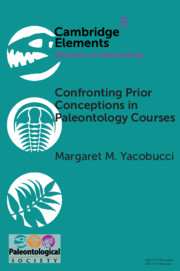Element contents
Confronting Prior Conceptions in Paleontology Courses
Published online by Cambridge University Press: 31 October 2018
Summary
- Type
- Element
- Information
- Series: Elements of PaleontologyOnline ISBN: 9781108681391Publisher: Cambridge University PressPrint publication: 15 November 2018
References
- 20
- Cited by

